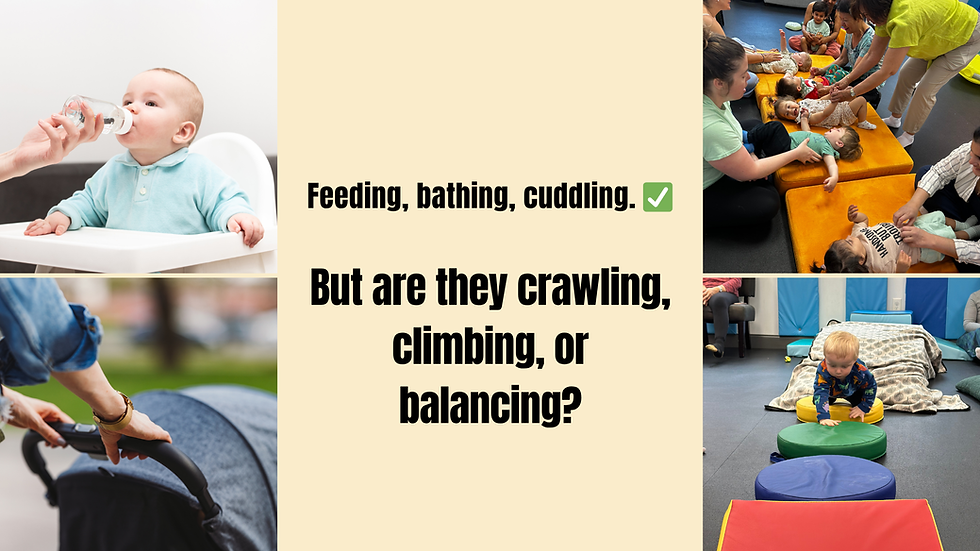Couch to Couch: The Big Secret to Managing Your Feelings In Times of High-Stress
- Jordanna Spaulding

- May 29, 2020
- 6 min read
I want to tell you a secret. Its about finding balance between thoughts and feelings.
Do you want your kids to be able to bounce back from any situation that has caused stress?
Living in a state of high stress may result in trauma. I want you to know about a few tips and tools to help empower you to take action. Your actions can support a positive reaction for yourself and others.

I am a special education teacher who has dedicated my life's work to equalizing opportunity for children. I taught in 3 different school districts across New Jersey, home-schooled for years for a private family with 6 children ranging ages 2-18, worked in Applied Behavior Analyst, ABA, and academic tutoring.
While I was working in these positions, I realized the lack of opportunities available for a diverse range of children to socialize and compete against each other. What you learn throughout your life is determined by the experiences that connect us to one another. More than just experiencing life, I found its important to provide these opportunities with a specialized team that can meet the needs of the community it serves.

This "Couch to Couch" series is dedicated to sharing what I know to empower parents and families with their children.
Have you ever wondered why some people aren't phased by change and others are immediately frazzled when you diverge from a schedule?
How come some people are able to adapt to change better than other? The most successful people are the ones that are "ready". Ready means that you are in the emotional green zone and ready to go. You are ready to focus, process, synthesize and analyze. You are calm, rested, nourished, and confident. You are a team player, a leader, and who sets the bar for others. You share well, adapt to change, articulate their feelings and thoughts, and are highly aware of their position in a group.
Does this sound like you or someone you know?
Does this describe your child?
As life happens, we are always going to be hit with stress. One of the biggest stressors are change. Small changes like wearing new shoes to big changes like moving, divorce, new jobs, or even health crisis and pandemics, like the changes in our society forced on us as a result of COVID-19.
These are all major changes in life that have and will continue to affect us. At some point, statistically, we are likely to go through at least 1 of the big changes.
The secret of this perfect student isn't their maturity or age but their ability to adapt to change. Another word for change is transition. A student who is able to accept constant disruptions and changes is strong at transitioning because of their ability to adapt.
What's their superpower and how can you get the power?
We know book smarts. We know that IQ is the is a score you can earn by assessing your intelligence. However, this score only shows your ability to think in mathematical, out of the box thinking of problems and reasoning. However, this score does not measure human interaction. Someone with a high IQ can think critically about shapes, positions and patterns.
Lets talk another intelligence. Though critical thinking and problem solving are important, our abilities to have positive relationships with peers and the world around us, to some, may be a greater need and contributor to someone's success. I'm talking about Emotional Intelligence.
Emotional Intelligence, EI, is defined by 5 traits:
1. self-awareness
2. self-regulation
3. empathy
4. motivation
5. social skills.
"Surround yourself with amazingly intelligent men and women. The people I work with not only are smarter than I am, possessing both intellectual and emotional intelligence, but also share my determination to succeed. I will not make an important decision without them." -George Steinbrenner, the late owner of the NY Yankees.
Dive in with me to matters of emotional intelligence that are in our control: Self-Awareness & self-regulation. These 2-emotional intelligence translate as: are you able to name feelings as they come through, make positive choices on how to process them?
Lets Play. Your Turn: What is your emotional disposition? Are you anxious, nervous, sad, or angry? Self-Awareness means that you can name what you are feeling. Start with making feelings, both positive and negative tangible. Remember, learning through play and pretending or role playing can help you understand how your kiddo thinks and would likely react in a "real deal" situation. How can you role play with emotions?
We play with toys, objects, and crafts or drawings by personifying these items. Therefore, you can make emotions tangible by designing what they look like. Only you know what angry looks like to you. And only you know what excited looks like to you. These are subjective. Once way to make emotions tangible would be to design their avatar.
5-Ways to Design Emotion Avatars
1. You can browse magazines and build collage figures of each feeling.
2. Draw your vision for an emotion
3. Use emoji face inspiration stickers or coloring sheets
4. Build figurines with pencils, Legos or any other creative resources.
5. Take pictures of yourself showing each emotion and print them out.
Disney's Inside Out Movie perfectly personified feelings into avatars easy to understand. Using colors you can visually see which avatars are attractive, bright and positive, and which are cold, dark, and fiery.
Start with your most common feelings. Sad, angry, frustrated, scared, anxious, or insecure/unsure. Happy, excited, calm, and relaxed.
Now that you have what it looks like, decide what it feels like. Use these objects to personify your feelings. When you are having these feelings, take your emotion Avatar and talk to it. Tell you feelings why you are feeling them. What triggered you to feel.
Jessie's Sample Conversation talking to Sad.
"When Gina turned her video off when it was my turn to choose it made me feel really sad. Gina didn't want to be my friend and I didn't like it. It really hurt my feelings because it made me feel like she didn't like me."
Clearly, this is having a negative effect on Jessie. Should she accept that Gina did something that hurt her feelings or tell Gina this is what happened and how it made her feel? If you picked the latter, then you're right. Jessie was having feelings but there is no way for Gina to learn she did something to hurt someone if Jessie doesn't tell her what she did and how it made her feel.

Jessie also should take a moment to recognize that she is feeling disregarded and isolated. She may start to think, "I'm worthless. No one wants to be my friend." This is a dangerous and dark road to let your mind travel. With emotional intelligence, Jessie can first recognize how she is feeling and tell Gina. Jessie can also reflect and recognize that she has other friends, that she has other positive relationships in her life and that she has value, intelligence, and power. Using her power to tell Gina what she did hurt her feelings and she chooses to not believe she is worthless or alone. This power is Emotional intelligence.
Jessie made intelligent choices to not backlash at Gina but identify and name how she was feeling, tell her peer, and choose how she wants to feel moving forward. Jessie made the conscious choice to say exactly how she felt because she was able to recognize and rationalize her feelings through a process.
4-Steps to Process Feelings
Step 1. Recognize and name how you are feeling.
Step 2. Reflect and name what triggered you to have that feeling
Step 3. Face that feeling and talk to it. Negotiate with it and decide how you want to accept and let it in.
Step 4. Make a choice how to move forward and let it go as energy you want.

Do you think this advice is practical for your family? If you have started using a system like this one, how did it go?
Share your emotion avatars with our community on facebook @compasslearningadvantage
A deeper dive into how colors are color cues in self-regulation to come in our next blog.
Questions, comments, concerns? Send me an email with your story. I'm here to help.
Jordanna Spaulding
Founder & Program Director
COMPASS Learning Advantage





Comments